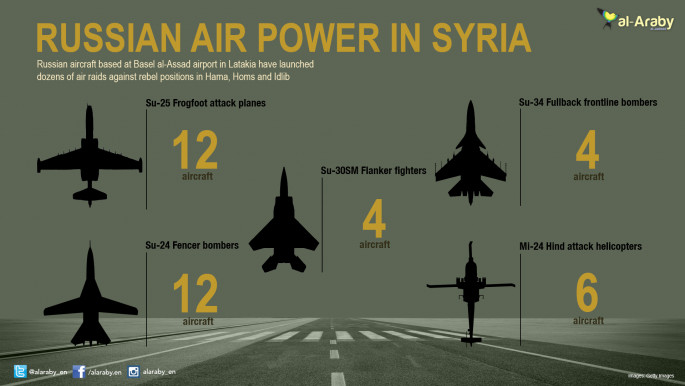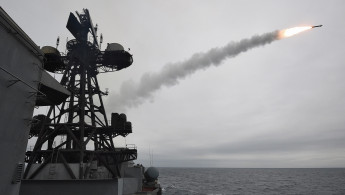Ruble-to-rubble: The high price of Russia's Syrian intervention
Quoting "informed military sources", RBTH said the operational cost of one hour of air sorties was between $65,000 and $110,000.
|
|||||
According to data RBTH said came from official sources, roughly 80 percent of air sotries are short range, covering the provinces of Idlib, Hama, Homs and the Damascus countryside.
The remaining medium- and long-range sorties take place over the provinces of Raqqa, Deir ez-Zor and Hasaka.
Ordnances and per-diems
Images taken of some weaponry loaded into Russian warplanes in Syria suggest they are old and low-precision bombs.
In other words, the cost of deploying them will be very low, especially when factoring in the fact that decommissioning them safely would be a costly and complicated process - certainly compared with just using them.
This is not to say Russia has not used modern or guided missiles. According to RBTH's sources, the average cost of these ordnances is about $8,000 per sortie.
In the first 25 days of Russia's intervention, the Russian air force conducted 934 sorties from the Humaimam base, or an average of 37 raids a day.
Their estimated cost is in the vicinity of $61 million, or $2.4 million a day.
The figure should be added to no less than $160,000 daily on per diem costs, logistics and wages for the 1,600 Russian personnel in Syria, according to RBTH's figures.
The cost of the air bridge Russia established with Syria using An-124 Ruslan and Il-76 planes, meanwhile, was approximately $1.9 million dollars over the period in question, or $75,000 per day.
The final figure calculated by the Russian news site was thus $2.5 million a day, excluding the costs of upgrading the Syrian air base and the cost of Caliber cruise missiles fired from warships in the Caspian Sea, a volley of which costs at least $20 million
If the same pace of operations until the end of the year is maintained, RBTH warned, it may cost the budget $280 million this year.
There have been other attempts to estimate the costs of the Russian operation in Syria. Defence publication IHS Jane's, for instance, said real costs could reach $4 million per day.
In turn, the Russian newspaper Kommersant, based on expert forecasts, assessed the cost of the Russian operation in Syria over one year to be around $3 million per day.
Nevertheless, these figures pale in comparison with US spending on operations in Iraq and Syria against IS - which the Pentagon last year estimated at $7-8 million a day.
 |
Russian public concerned
Senior Russian officials had from the outset sought to reassure the Russian public that the cost of the operations in Syria would be covered by the 2015 defence budget, worth $50 billion, and would constitute no additional burden on the Russian economy.
Despite this, Russians are concerned about the consequences of intervention in the Syrian conflict and about possible Russian casualties.
This is according to a fresh survey by the Levada Center, a Russian independent pollster, as reported in local Russian press.
The report said 41 percent of respondents agreed Russia's participation in the war "will take away money needed for the economy and social issues in Russia".
Meanwhile, 39 percent of respondents said the main harm from the intervention by Russia in this conflict could be the death or injury of Russian soldiers in the course of operations, or as a result of "terrorist attacks".
Among other threats, participants in the survey highlighted the danger of "mission creep" (18 percent), and "increased terrorist threat" in the Russian Federation (17 percent).
Furthermore, 11 percent of respondents were concerned about the possible deterioration of relations with the United States and other Western countries, and eight percent about relations with Turkey, Saudi Arabia and other states in the Middle East.
| _ |
 |
Follow Karim Traboulsi on Twitter: @Kareemios


![President Pezeshkian has denounced Israel's attacks on Lebanon [Getty]](/sites/default/files/styles/image_684x385/public/2173482924.jpeg?h=a5f2f23a&itok=q3evVtko)



 Follow the Middle East's top stories in English at The New Arab on Google News
Follow the Middle East's top stories in English at The New Arab on Google News


